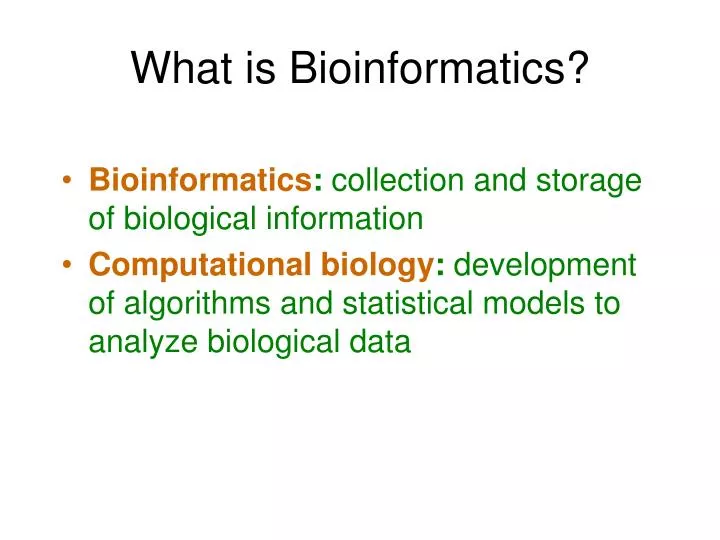What Does Bioinformatics Tutor Do?
The Basic Principles Of Bioinformatics Tutor
Table of ContentsWhat Does Bioinformatics Tutor Do?Fascination About Bioinformatics TutorThe 7-Minute Rule for Bioinformatics TutorThe Buzz on Bioinformatics TutorBioinformatics Tutor Things To Know Before You Get This
Of the total amount participants entailed in the training, 80% were students from public college organizations, while the remaining 20% came from exclusive institutions. To certify for a certificate of participation, students were needed to participate in at least 90% of the complete training hours. As a result of this requirement, an excellent 95% of the participants successfully obtained their certificates, having not only fulfilled the minimum participation requirements yet also finished all designated tasks throughout the training.
Throughout the elevation of the COVID-19 pandemic, specifically in between June and August 2020, the project group was charged with arranging specialized training in bioinformatics. This training was specifically focused on pupils from the research team Core for Study in Applied Computer at the Federal College of Pará (UFRA) The adaptation to remote knowing platforms as a result of the pandemic created a chance to explore brand-new mentor methods and digital devices that enhanced both reach and performance.
To react to the expanding demand in the computer and life scientific researches areas, a sophisticated course was presented in 2020 entitled Intro to Artificial intelligence. This course was designed to provide an available yet detailed review of Artificial Intelligence techniques, particularly as applied in bioinformatics. The program was lugged out over three months, from October to December 2020, and was delivered completely online via the Google Meet system. This digital style allowed involvement from trainees across Brazil, a number of whom may not have had the opportunity to attend in-person sessions.
Little Known Facts About Bioinformatics Tutor.
Around 50% of the total training hours were dedicated to functional tasks where trainees constructed smart models and applications in an array of clinical domain names, consisting of genetics, molecular biology, and environmental data analysis. These systems enabled pupils to involve in real-time information control, design training, and formula trial and error.
The training course attracted 80 participants in total. Sixty of them were associated with various college establishments in the state of Pará, while the staying twenty came from establishments found in 5 other Brazilian states. This broad geographical representation highlighted the national rate of interest in bioinformatics and the growing demand for specialized skills around. By presenting Artificial Knowledge in a practical and pertinent context, the effort served to link the gap in between concept and real-world application, giving trainees with a strong foundation for future research or work in the field.
The training initiative formed part of a broader academic outreach initiative called the Bioinformatics on the Road project. This job has, over the years, presented lots of trainees to the world of bioinformatics and computational biology. The events held under this umbrella campaign have actually happened throughout numerous areas and years, as summarized in Table 1 (Listing of occasions, places, years, and complete varieties of trainees and instructors)
Several of these teams, originally brought together by their engagement in training occasions, have actually since gone on to create independent clinical research study in partnership with neighborhood scholastic establishments. The training not just fostered scientific reasoning within the context of bioinformatics however likewise triggered joint connections that expanded past the training setting.
The Best Strategy To Use For Bioinformatics Tutor
The very same group, leaving out IH and RR, also acted as tutors for the sensible training modules. Financing for the job was supplied via the give 88887.200562/ 2018-00 from CAPES.
The Federal University of Pará's Office of Research (PROPESP/UFPA) additionally offered financial assistance, especially for the production of the last manuscript. The authors state no industrial or monetary problems of interest that could have influenced the research study. Additionally, all opinions and interpretations shared in this write-up are solely those of the writers and do not always mirror those of their respective institutions, the author, editors, or reviewers associated with the magazine procedure.

Rumored Buzz on Bioinformatics Tutor
From a pedagogical point of view, the training technique utilized in the training was purposefully interactive. Classes were performed in a way that urged pupil participation and conversation, exceeding memorizing memorization to discover exactly how ideas are developed, applied in day-to-day life, and examined in scholastic setups. The instructional viewpoint concentrated on nurturing both solid and struggling pupils, giving customized assistance, and structure self-confidence with sustained mentorship and perseverance.

Each group, including approximately 36 participants, was supported by three mentors-- most of whom were postdoctoral scientists with customized knowledge. These coaches not only assisted create the team projects but likewise promoted their implementation, guaranteeing that each research study question was both appropriate and properly difficult. The goal was to give a biologically realistic context that participants can explore via open-ended purposes and accessibility to curated datasets.
For extra insights into the method and outcomes of this project-based knowing strategy, readers are routed to S1 Text, which consists of comprehensive summaries of the pedagogical structure, examination techniques, and task themes made use of in the training sessions.
What Does Bioinformatics Tutor Do?
Of the total participants involved in the training, 80% were trainees from public greater great post to read education organizations, while the remaining 20% came from personal organizations. To qualify for a certification of engagement, students were called for to attend at the very least 90% of the total training hours. Notably, past the trainees who enrolled in the training sessions, seven knowledgeable trainers got involved in supplying the courses, while three dedicated research study professors coordinated the general training process. About 50% of the total training hours were committed to useful activities where students constructed intelligent designs and applications in an array of clinical domains, consisting of genes, molecular biology, and ecological information evaluation. The training not only cultivated clinical reasoning within the context of bioinformatics however likewise sparked collective connections that expanded beyond the training atmosphere.